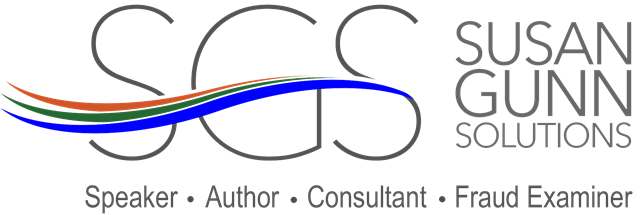Introduction To A (Mostly) Unregulated Industry
By Guest Blogger: Cheryl Donahue
Editor’s Note: Dealing with merchant card service providers in business can be costly. That’s why I invited Cheryl Donahue to guest blog and provide insight to help save us some $$$$. This is part one of her three part series.
Behind the system that allows a practice to collect credit card payments is a complicated and largely unregulated industry. Chances are, this revenue collection system costs significantly more than needed and is currently siphoning money straight out of your practice. Welcome to the Merchant Services Industry, where acquisitions are common and fraud abounds.
Today, we dive into Part 1 of the Merchant Services 101 Three Part Series. We will examine a few aspects of the merchant card services industry that will not only make you a more informed consumer, but also provide tools to better evaluate your practice’s statements. Let’s dig in!
Merchant services is a largely unregulated industry. As incredible as it seems, there is very little regulation in the merchant services industry. Merchant processing companies, hereafter referred to as “processors,” can add or increase fees without requiring notification.
Occasionally, there might be a notice at the bottom of your practice’s monthly statement informing of an upcoming rate increase; however, we have discovered many increases where no preceding message was ever sent.
Rate increase is common. When one processor is acquired by another processor, your practice is likely to experience a rate increase within six months to one year of the acquisition. Two of the three biggest processors catering to the healthcare industry have been sold in the last year and a half. Since then, we have discovered that 90% of our clients using one of these two processors have had their rates increased.
So, how do you know if your practice has been affected? Look at the statement, has the processor name or the format of the statement changed
recently? If so, watch out!
What’s worse is that these increases have occurred with no notification to the practice. Too often, increases are hidden toward the bottom of statements, typically being included in the ‘Other Fees’ or ‘Surcharges’ sections. The only way to determine if there was an increase is to examine the specific line items on each statement.
How about a spot check? Pick five to ten line items on the statement and see if the costs have increased from one statement to the next. As an example, pick the Technology and Security Fee, Authorization Fee, DISC fee, etc. It is critical to perform a spot check each month, as most processors only allow 30-60 days for an error to be corrected. After this time period, you can still request that they lower the fee or fix an error, but, unfortunately, the refund deadline has passed.
Determine your effective rate. The practice’s effective rate is determined by taking the total fees charged in a particular month and dividing that number by the total credit card volume processed in the same month. The rate will fluctuate each month based on the credit card types processed.
For instance, one month the practice might accept more debit cards which usually cost less to process than an airline miles reward card. Although there will be fluctuations each month, if those fluctuations are more than 0.20%, the practice’s rates have most likely increased.
Coding errors happen without accountability. When a merchant account is initially set up, the data entry is performed by a human being and human beings are prone to error. The person entering the data may have had a bad morning, not enough sleep or committed a simple typo; either way, the mistake could be costing the practice.
In one case, we identified a practice not coded properly with American Express, causing that practice to be charged an unnecessarily high rate for years. While the error was finally corrected, the processor refused a refund for the overcharges. Why? The processor simply isn’t required to, proving again the lack of regulation in the industry.
Mid and non-qualified charges can double your cost. On the practice’s statement, does it list mid-qualified or non-qualified line items? Do you know the definition of mid or non-qualified items? If not, don’t worry; no one else does either. Amazingly, there is no industry standard definition for these terms. If you call and ask your processor, they will likely tell you those categories are credit card transactions that do not qualify for the practice’s base rate. Okay…that clears it all up, doesn’t it? If there is a large amount of mid and non-qualified charges, call the processor immediately for an explanation, ask them to educate you on ways to avoid them.
Watch out for costly procedural errors. When the processor initially creates the new merchant account, there was most likely a training session. However, changes in equipment, industry standards (such as chip cards), and employee turnover means the practice may no longer be following the best practices of card acceptance.
To get the most out of your merchant service, your team must use proper procedures when accepting a card. The same card taken by the practice will cost you different amounts depending on how it is accepted. Keying in a credit card costs more than swiping or chipping a card. If a team member is not entering additional information such as zip code or street number, those transactions may cost more.
Sometimes, the processor will set up the practice’s equipment or software incorrectly and the system will not prompt for this additional information. Moral of the story, stay aware of merchant card provider changes and be vigilant when entering cards.
Skip the credit card insurance reimbursements. Are you accepting insurance reimbursements via a credit card number that is “keyed” into the system? These card brands charge a higher interchange rate to process a keyed sale versus a card present at sale.
Corporate cards have some of the highest costs. If your practice is accepting credit card payments from insurance companies, you have a double whammy: a keyed transaction on a corporate card. Call the insurance companies and insist they send a check, or electronic funds transfer directly to the practice’s bank account instead.
Join me for Part 2 when we examine Payment Card Industry Compliance. You will learn why a practice needs to be compliant, how to determine it is compliant and how PCI Compliance overlaps the HIPAA Security Rule.
Cheryl Donahue is the Director of New Business at Merchant Advocate. Founded in 2007, Merchant Advocate is the trusted source in merchant services, providing fairness and transparency in the unregulated credit card processing industry. We provide exceptional results and increase bottom lines by protecting our customers from unfair rates, fees and hidden costs.
You may contact Cheryl with questions or to receive a free analysis on your merchant statement by emailing her at cdonahue@merchantadvocate.com or calling 720-526-5318


